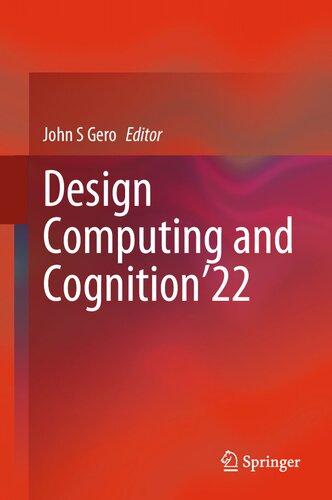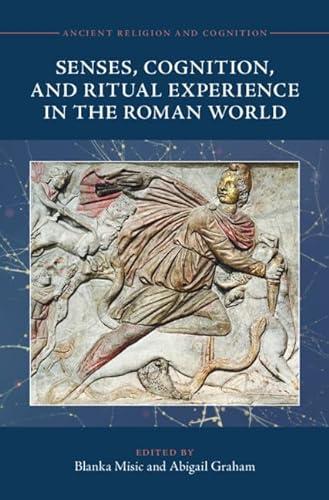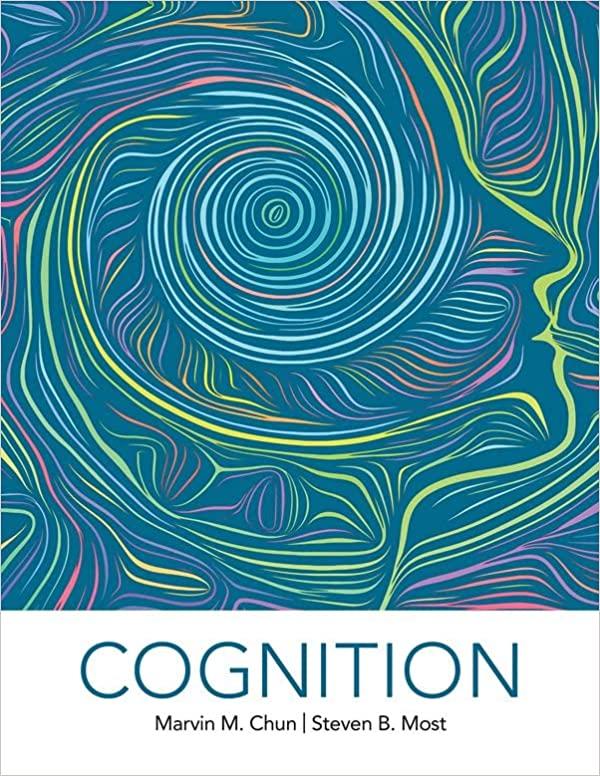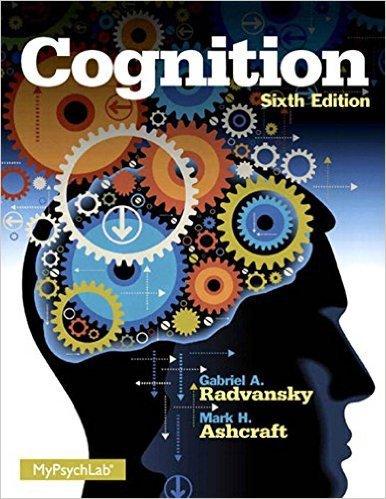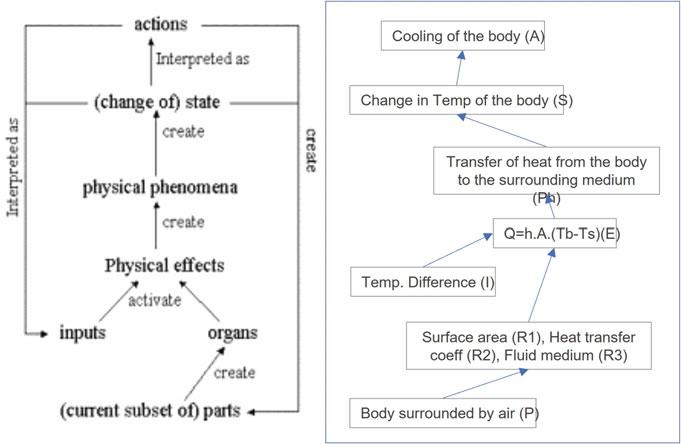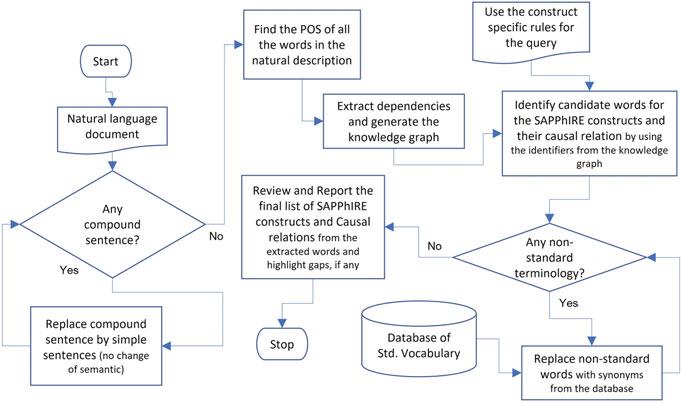List of Reviewers
Henri Achten, Czech Technical University in Prague, Czech Republic
Katerina Alexiou, The Open University, UK
Janet Allen, University of Oklahoma, USA
Jose Beirao, University of Lisbon, Portugal
Deborah Benros, University College London, UK
Lucienne Blessing, Singapore University of Technology and Design, Singapore
Nathalie Bonnardel, Aix Marseille Université, France
Yuri Borgianni, Free University of Bozen | Bolzano, Italy
Justine Boudier, MinesParis Tech, France
Jean-François Boujut, Grenoble INP, France
Frances Brazier, Delft University of Technology, Netherlands
Dave Brown, WPI, USA
Jon Cagan, Carnegie Mellon University, USA
Hernan Casakin, Ariel University, Israel
Gaetano Cascini, Politecnico di Milano, Italy
Phil Cash, TU Denmark, Denmark
Gabriela Celani, UNICAMP, Brazil
John Clarkson, University of Cambridge, UK
Nathan Crilly, University of Cambridge, UK
Francoise Detienne, CNRS Telecom Paris Tech, France
Andy Dong, Oregon State University, USA
Jose Duarte, TU Lisbon, Portugal
Chris Earl, The Open University, UK
Claudia Eckert, The Open University, UK
Thanos Economou, Georgia Institute of Technology, USA
Benoit Eynard, Université de Technologie de Compiègne, France
Georges Fadel, Clemson University, USA
Foucault Foucault, Laboratoire G-SCOP, France
Montagna Francesca, Politecnico di Torino, Italy
Dan Frey, Massachusetts Institute of Technology, USA
Katherine Fu, Georgia Institute of Technology, USA
Haruyuki Fujii, Tokyo Institute of Technology, Japan
John Gero, University of North Carolina at Charlotte, USA
Alberto Giretti, UNiversità Politecnica delle Marche, Italy
Ashok Goel, Georgia Institute of Technology, USA
Gabi Goldschmidt, The Technion, Israel
James Gopsill, University of Bristol, UK
Kosa Goucher-Lambert, University of California, Berkeley, USA
Mark Goudswaard, University of Bristol, UK
Ewa Grabska, Jagiellonian University, Poland
Kaz Grace, University of Sydney, Australia
Madeleine Grealy, University of Strathclyde, UK
Paul Grogan, Stevens Institute of Technology, USA
Ning Gu, University of South Australia, Australia
Sean Hanna, University College London, UK
Alexandros Haridis-Charidis, Massachusetts Institute of Technology, USA
Armand Hatchuel, MINES ParisTech, France
Laura Hay, University of Strathclyde, UK
John Haymaker, Georgia Institute of Technology, USA
Ben Hicks, University of Bristol, UK
Ada Hurst, University of Waterloo, Canada
Yan Jin, University of Southern California, USA
David Jones, Aberystwyth University, UK
Yehuda Kalay, University of California, Berkeley, Israel
Jeff Kan, City University of Hong Kong, Hong Kong
Udo Kannengiesser, Johannes Kepler University Linz, Austria
Nick Kelly, Queensland University of Technology, Australia
Mi Jeong Kim, Hanyang University, South-Korea
Sotirios Kotsopoulos, Massachusetts Institute of Technology, USA
Gül Kremer, Iowa State University, USA
Ramesh Krishnamurti, Carnegie Mellon University, USA
Pascal Le Masson, MINES ParisTech, France
Udo Lindemann, Technical University of Munich, Germany
Julie Linsey, Georgia Institute of Technology, USA
Ying Liu, Cardiff University, UK
Quentin Lohmeyer, ETH Zurich, Switzerland
Jianxi Luo, Singapore University of Technology and Design, Singapore
Mary Lou Maher, University of North Carolina Charlotte, USA
Anja Maier, University of Strathclyde and Technical University of Denmark, UK
Chris McComb, Carnegie Mellon University, USA
Alison McKay, University of Leeds, UK
Scarlett Miller, The Pennsylvania State University, USA
Julie Milovanovic, University of North Carolina at Charlotte, France
Farrokh Mistree, University of Oklahoma at Norman, USA
Alison Olechowski, University of Toronto, Canada
Mine Ozkar, Istanbul Technical University, Turkey
Pieter Pauwels, Eindhoven University of Technology, Netherlands
Marija Perisic, University of Zagreb, Croatia
Marian Petre, The Open University, UK
Ayush Raina, Carnegie Mellon University, USA
Charlie Ranscombe, Swinburne University of Technology, Australia
Rabee Reffat, Assiut University, Egypt
Yoram Reich, Tel-Aviv University, Israel
Rob Saunders, Leiden University, Netherlands
Tripp Shealy, Virginia Tech, USA
Vishal Singh, Indian Institute of Science, India
Steve Smith, Texas A&M University, USA
Chris Snider, University of Bristol, UK
Ricardo Sosa, Auckland University of Technology, New-Zealand
Ram Sriram, National Institute of Standards, USA
Martin Stacey, De Montfort University, UK
Mario Storga, University of Zagreb, Croatia
Rudi Stouffs, National University of Singapore, Singapore
Markus Stumptner, University of South Australia, Australia
Joshua Summers, The University of Texas at Dallas, USA
Peter Torlind, Luleå University of Technology, Sweden
Barbara Tversky, Columbia and Stanford, USA
Ambrosio Valencia-Romero, Carnegie Mellon University, USA
Sonia Vieira, Independent Researcher, Portugal
Andrew Wodehouse, University of Strathclyde, UK
Rob Woodbury, Simon Fraser University, Canada
Maria Yang, Massachusetts Institute of Technology, USA
Bernard Yannou, CentraleSupélec, France
Rongrong Yu, University of South Australia, Australia
Theo Zamenopoulos, The Open University, UK
Yong Zeng, Concordia University, Canada
Natural Language Processing and Design
Extracting Information for Creating SAPPhIRE Model of Causality from Natural Language Descriptions ....................
Kausik Bhattacharya, Apoorv Naresh Bhatt, B. S. C. Ranjan, Sonal Keshwani, V. Srinivasan, and Amaresh Chakrabarti
3
Recognizing the Structure of Biological Designs in Text Documents .... 21 Hong Lu, Andrew Hornback, Spencer Rugaber, and Ashok K. Goel
Generative Design Ideation: A Natural Language Generation Approach 39
Qihao Zhu and Jianxi Luo
The ABC (Affordance-Bias-Cognition) Reasoning of Product-Use Interaction: A Text Mining Approach 51 Nicola Melluso, Gualtiero Fantoni, and Antonella Martini
Design Progress Dashboard: Visualising a Quantitative Divergent/Convergent Pattern of Design Team Progress Through Natural Language Processing ....................................... 67 Matt Chiu, Arlindo Silva, and Siska Lim
TechNet 2.0: Expanding Technology Semantic Network with Qualitative Relations to Enhance Reasoning Capabilities ......... 85
Serhad Sarica and Jianxi Luo
Design Cognition—1
A Classification of Methods and Constructs in Design Cognition Research ......................................................... 97 Emma Lawrie, Laura Hay, and Andrew Wodehouse
Is the PSVT:R Suitable for Evaluating Spatial Skill in Design?
A Critique ........................................................ 115
Kristin A. Bartlett and Jorge D. Camba
Effects of Open-Endedness on Problem Solving Behaviour 127
Hanan Alattas and P. Robert Duimering
A Focussed Literature Review of Dual-Process Thinking to Inform the Study of Hackathons 145
Meagan Flus and Alison Olechowski
A Systems Thinking Inspired Approach to Understanding Design Activity ........................................................... 161
Gregory Litster, Ada Hurst, and Carlos Cardoso
Investigating the Cognitive Processes Involved in Design Ideation Using Psychological Tests .......................................... 179
Gerard Campbell, Laura Hay, Alex Duffy, Laura Lyall, Chris McTeague, Tijana Vuletic, and Madeleine Grealy
Design Neurocognition
Brain and Behavior in Engineering Design: An Exploratory Study on Using Concept Mapping ......................................... 199
Mo Hu, Tripp Shealy, John Gero, Julie Milovanovic, and Paulo Ignacio Jr
EEG Microstate Characteristics in Product Conceptual Design: Increased Time Coverage of Microstate Class Related to the Default Mode Network 215
Koji Koizumi, Fukashi Mikami, Kazutaka Ueda, and Masayuki Nakao
Neurophysiological Responses to Biophilic Design: A Pilot Experiment Using VR and EEG 235
Nayeon Kim and John S. Gero
Comparing Designers’ EEG Activity Characteristics for Common Association and Remote Association ................................. 255
Yuan Yin, Pan Wang, Ji Han, Haoyu Zuo, and Peter Childs
Characterization of Design Brain States Over Time When Using Morphological Analysis and TRIZ .................................. 269
Julie Milovanovic, John Gero, Tripp Shealy, and Mo Hu
Learning and Design
Representing Design Cognition Through 3-D Deep Generative Models 289 Ba¸sak Çakmak and Cihan Öngün
Classifying Building and Ground Relationships Using Unsupervised Graph-Level Representation Learning ................. 305
Abdulrahman Alymani, Andrea Mujica, Wassim Jabi, and Padraig Corcoran
Data-Based Generation of Residential Floorplans Using Neural Networks 321
Louise Deprez, Ruben Verstraeten, and Pieter Pauwels
Voxel Substitutional Sampling: Generative Machine Learning for Architectural Design 341
Immanuel Koh
Creative Design and Co-design
The ‘Atlas’ of Design Conceptual Space: A Design Thinking Framework with Cognitive and Computational Footings .............. 361
Jielin Chen and Rudi Stouffs
Computer Games for Design Creativity Research: Opportunities and Challenges .................................................... 379
Esdras Paravizo and Nathan Crilly
Exploring Designers’ Encounters with Unexpected Inspirational Stimuli ........................................................... 397
Elisa Kwon, Vivek Rao, and Kosa Goucher-Lambert
Collaborative Design: Evolution of Project’s Information and Role of the Graphic Interactions 409
Gaëlle Baudoux and Pierre Leclercq
Collaborative-Knowledge Construction Activity Method to Analyse Design-Learning in VR Co-design Crits 423
Hadas Sopher and Tomás Dorta
Revisiting Darke: Tracing the Emergence of Design Generators in Architectural Design ............................................ 441
Yu Cao, Yuval Kahlon, and Haruyuki Fujii
Design Cognition—2
Inspirational Stimuli Attain Visual Allocation: Examining Design Ideation with Eye-Tracking ......................................... 463
Henrikke Dybvik, Filip G. Abelson, Pasi Aalto, Kosa Goucher-Lambert, and Martin Steinert
Using Eye Tracking to Measure Cognitive Load of Designers in Situ 481
Christoph Zimmerer, Thomas Nelius, and Sven Matthiesen
A Test of the Structural Alignment Model for Similarity Judgements of Design Concepts ..................................... 497
Chris McTeague, Alex Duffy, Laura Hay, Tijana Vuletic, Gerard Campbell, and Madeleine Grealy
Design Strategies that Work: How Engineers Use Sequential Decision-Making to Improve Design Performance in Concept Selection 509
Yakira Mirabito and Kosa Goucher-Lambert
Knowledge Transfer in Designing as a Situated Activity: A Case Study of Spatial Design Using Lego Blocks ........................... 527
Yuval Kahlon and Haruyuki Fujii
Shape Grammars and Design Knowledge
Back to the Drawing Board: Shape Calculations in Shape Machine .... 549
Athanassios Economou and Tzu-Chieh Kurt Hong
Notes on Shape Valued Functions ................................... 569
Djordje Krstic
Making Grammars for Computational Lacemaking .................. 587
Katerina Labrou and Sotirios D. Kotsopoulos
An Agent-Based Approach to Adaptive Design Based on Influences Mediated by Artifacts 605
Meichun Liu and Tsailu Liu
Visualization of Design Data in the Wild: Interactive Evaluation and Exploration of Combined Performance and Geometric Data 627
Ashley Hartwell, Eamon Whalen, Bryan Ong, and Caitlin Mueller
Dimensions of Prototyping Knowledge: Characterising Prototype Evaluation Methods and Their Contributions to Design Knowledge .... 643
Ricardo M. Real, Chris Snider, Mark Goudswaard, and Ben Hicks
Design Generation and Quantum Computing
A New Approach to Facilitated Idea Generation and Application Through a Preliminary Study ....................................... 663
Morgan B. Weaver, Alexander Murphy, Christopher Banks, and Julie Linsey
The Impact of Procedural Knowledge Retrieval on the Architectural Design Process in Parametric Design Environments 681
Thomas Dissaux and Sylvie Jancart
Evolutionary Optimization of Benchmarks: Parametric Typologies for Generating Typical Designs ..................................... 699
Likai Wang, Patrick Janssen, and Kian Wee Chen
Imager, Interpreter, Aesthete: Roles Played by Design Students in Graphic Design Ideation 719
Vimalkrishnan Rangarajan, Prasad S. Onkar, Alison De Kruiff, and Deirdre Barron
Research Questions in Applying Quantum Computing to Systems Design 735
James Gopsill, Oliver Schiffmann, and Ben Hicks
Human Behavior
“Like a Moodboard, But More Interactive”: The Role of Expertise in Designers’ Mental Models and Speculations on an Intelligent Design Assistant ................................................... 749
Vivek Rao, Elisa Kwon, and Kosa Goucher-Lambert
How Long Until We Are (Psychologically) Safe? A Longitudinal Investigation of Psychological Safety in Virtual Engineering Design Teams in Education ......................................... 767
Courtney Cole, Abigail O’Connell, Jacqueline Marhefka, Kathryn Jablokow, Susan Mohammad, Sarah Ritter, and Scarlett Miller
The Effect of Design Styles and Logos on Product Preference 785
Wei Xiang, Pan Wang, and Hao Jiang
How Does Machine Advice Influence Design Choice? The Effect of Error on Design Decision Making 801
Ananya Nandy and Kosa Goucher-Lambert
The Creation of Emotionally Attuned Patterns Through an Analysis of Line ................................................ 819
Lewis Urquhart and Andrew Wodehouse
Intercoder Reliability Study
Goals of the Study
The goals of this Intercoder Reliability study were the following:
. What was the degree of agreement between two or more researchers creating descriptions of systems with the SAPPhIRE model from the given descriptions in natural language?
. What were the issues that researchers faced while creating descriptions of systems with the SAPPhIRE model from the given descriptions in natural language?
Study Procedure
For the first research question, a study was conducted with four researchers, each having a minimum of 4 years of experience in using the SAPPhIRE model for their own research. Each researcher was given the description in natural language for 4 systems (we call each description ‘a sample’) and was asked to create a description using the SAPPhIRE model for each system. Intercoder Reliability score was then calculated based on the word/group of words identified for each SAPPhIRE construct in each sample. We calculated the Intercoder Reliability Score for a given sentence and aggregated score for all the sentences in each sample. The ‘% Intercoder Reliability’ score of a sentence is calculated as:
T otal number of S AP Ph I R E clauses agreed at (a ) 75% and (b ) 50% le v els
T otal number of AL L S AP Ph I R E clauses identi f ied by all researchers × 100
We calculated the score at the following two levels:
(a) 75% level: here, we consider those words for which three or more out of 4 researchers agreed with the words and their labels
(b) 50% level: here, we consider those words for which two or more out of 4 researchers agreed with the words and their labels
The above calculation is illustrated here with this sentence—“Respiration can be a significant cause of water loss”. This sentence was part of one of the four samples. The four researchers together identified the SAPPhIRE words as given in Table 1:
From Table 1, we can observe that:
. Three or more researchers agreed with only one word (i.e., ‘Respiration as a Phenomenon)
. Two or more researchers agreed with both words (i.e., ‘Respiration’ & ‘water loss’ as Phenomenon and State Change respectively)
Hence, we can compute the score as follows in Table 2:
10K.Bhattacharyaetal.
Table 1 SAPPhIRE constructs identified by researchers in a sentence, “Respiration can be a significant cause of water loss”
Word(s) SAPPhIRE constructs (identified by four researchers)
Action Phenomenon State change Explanation
Respiration 1 3
3 out of 4 agreed that ‘Respiration’ is a Phenomenon and 1 felt it is an Action
Water loss 1 2 2 out of 4 agreed that ‘Water loss’ is a State Change and1feltitisanActionand1didn’t assign any label
Table 2 Intercoder-reliability score of a sentence, “Respiration can be a significant cause of water loss”
Total # of Words 3 or more of 4 researchers agreed 2 or more of 4 researchers agreed Count % Count % 2 (Respiration, Water loss) 1 (Respiration) 50% 2 (Respiration, Water loss) 100%
Samples Used in the Intercoder Reliability Study and Results
Designers typically look at large number of short descriptions of biological or engineered systems and hand pick the relevant ones for which later they seek more details. Such short descriptions are usually about ‘how a system works’ and therefore has causal information. Four samples (natural language descriptions of four systems) used in the study are ‘Elephant Turbinate’, ‘Bombardier Beetle’, ‘Thermal Wheel’ and ‘Electric Horn’ and represented by the sample ID ‘EG1’, ‘EG2’, ‘EG3’ and ‘EG4’ respectively. The contents of these samples were hand curated with information taken from the commonly available websites such as howstuffworks.com, asknature.org or Wikipedia etc. The details of these samples are available at https://github.com/ kausikbh/DCC22_SAPPhIRE_Data. The final summary of the Intercoder Reliability score of all four samples is given in Table 3.
Table 3 Intercoder Reliability score of all 4 samples
Sample ID Total # of words 3 or more out of 4 researchers agreed 2 or more out of 4 researchers agreed
The results above indicated disagreement among the researchers on deciding about the SAPPhIRE information in each sample. Hence workshops were conducted with the 4 researchers to collect feedback and identify the root causes for the differences. Based on the workshop, the following key root causes were identified:
. Differences in natural language interpretation among the researchers, leading to multiple representations of the same information given in a natural language text.
. Often natural language text does not have enough information to complete the model, but there is no standard way of assessing the information gaps and how to fill the gaps.
. The definition of the SAPPhIRE constructs is not applied consistently due to perceptual differences among humans. This leads to interpretational differences of the same definition.
. The text in natural language often describes the technical process at a high level and does not mention the underlying physical principles. As a result, different technical or scientific terminologies were used to represent the same physical behavior by the researchers.
For the final root cause, an observational study was conducted to share the benefits of using a catalogue of physical laws and effects [5]. It was found that the use of standard terminologies reduced the total number of SAPPhIRE words to describe a model by 28% by increasing the use of common words to represent the same physical behavior. Please note that while low Intercoder Reliability does not necessarily indicate lack of accuracy but lack of consistency. For instance, ‘how a pendulum works’ can be written in different physics books in different details; while all may be accurate descriptions, not all may be consistent with one another.
Proposed Process
We developed a new process for extracting the SAPPhIRE construct-specific information from a natural language description. In this new process, we propose the following:
1. Knowledge graphs are found to be very powerful for knowledge representation from large natural language documents [38]. Hence Knowledge graphs is used in this process as a standard way of representing the information extracted from a natural language text to reduce any interpretational differences of natural language document.
2. Rule-based reasoning applied to a knowledge graph simulates human reasoning ability and allows incorporating prior knowledge to assist in reasoning [42]. Hence a set of SAPPhIRE construct-specific standard rules is developed to identify candidate words for each SAPPhIRE construct. This will help in applying the definition of the SAPPhIRE constructs consistently.
3. Use of a standard vocabulary of physical laws is proposed in the new process, to avoid use of different words or terminologies that represent the same physical behavior. However, more work is needed to implement this.
Process Descriptions
The process flow diagram of the new generalized process is shown in Fig. 2. Though the process flow diagram has the provision for all the features mentioned above, the first version of the process implemented only the first two features (i.e., Knowledge Graph and rules). Here, we first convert all compound sentences into simple ones by splitting them into independent sentences. Then we identify the Parts-of-Speech (POS) tag of every word. Once pre-processing is completed, a knowledge graph is generated using the POS tags of the words and their syntactic relationships. The objective of the knowledge graph is to represent the information given in the natural language description in a common format so that extracting information later, relevant for a particular SAPPhIRE construct, becomes easy. POS tags that are used in building the knowledge graph are (a) Nouns, (b) Verbs (we distinguish transitive and intransitive verbs), (c) Adjectives, (d) Adverbs, (e) Prepositions, and (f) Conjunctions. POS tagging is done in the following sequence. For each sentence, first the verb(s), subject(s) and object(s) are identified. Then other relations between the words (e.g., Nouns connected through prepositions, Adjectives with Nouns and Adverbs with Verbs) are identified. Then any Conjunction, Adverb or Preposition that connect two independent clauses (a sentence or a group of words that has its own meaning) are identified, and finally, the sequence of actions (transitive verbs) as given in the natural language description are identified. Through the steps explained above, we capture the following three types of information in the knowledge graph,
(a) Relation between two entities: This is done by identifying: (i) two nouns which are connected by a verb, (ii) a noun and an adjective or adverb connected by a verb and (iii) two nouns connected by a preposition.
(b) Conditions between two events: Here, events are represented by transitive verbs, and we capture whether two transitive verbs are connected using a conjunction or an adverb.
(c) The sequence of events: This is essentially a sequence of transitive verbs, representing a description of a technical process.
While building the Knowledge Graph and identifying candidate words, the meaning of the words should not be considered standalone or isolated. It is to be understood as to what information is conveyed and a single word or a group of words that convey a specific meaning in the context of the paragraph or document is to be picked up.
After this step, the construct-specific rules will be used to identify, from the knowledge graph, the candidate words for each SAPPhIRE construct and the causal relationships among them. For extracting the candidate words, the following sequence should be followed,
. First, work on all the nouns and identify those which could be the ‘Parts’. Then rest of the nouns should be considered for the ‘Inputs’ and the ‘State Change’. ‘State Change’ nouns will be associated with verbs that imply a meaning of a change in the noun.
. Then look for all the transitive verbs. Most of the natural language text describes a technical process comprising a sequence of action verbs. Once we identify the action verbs representing a technical process, we identify ‘Actions’ and ‘Phenomena’.
. Then work on the rest of the POS tags, like, Adjectives, Adverbs, Prepositions, Conjunctions etc., to identify Organs.
It should be noted that a particular word should be used in only one construct.1 The candidate words identified using the construct-specific rules are the potential SAPPhIRE constructs given in the natural language text to build the model. However, these words might not be the true SAPPhIRE constructs conforming to the definition given for the construct. Hence at this stage a review would be necessary to determine the appropriateness of the candidate words for each SAPPhIRE construct. A set of interpretation guidelines are created to assist this review process.
1 In the multi-instance cases, this may not be true. For example, change in parts can become the input.
Fig. 2 Process for extracting information from a natural language description
This review will also determine any missing SAPPhIRE construct. A reviewer will require (some/necessary) domain knowledge to perform the review task effectively.
Process Validation
A thorough developer testing was done first, before taking up user validation of the newly developed process.
Developer Testing
Developer testing was done using eight different sample cases where each sample has the natural language description of a system and its physical process. Samples used in the developer testing included all the four samples used during the Intercoder Reliability study before the new process was developed, as well as fresh samples. Old samples were used to compare the results obtained using with and without the new process. New samples were used as additional tests to verify whether the process is consistently working outside of the known examples. In all these samples (old and new ones), it was observed that the process was consistently able to extract candidate words for the SAPPhIRE constructs and their causal relations. Following this process, it was also possible to identify any missing information related to any SAPPhIRE construct. It was also observed that (some) domain knowledge was necessary to review the information extracted using the process and make a final choice of words for the SAPPhIRE constructs.
Figures 3 shows a comparison of the total number of words for each SAPPhIRE construct, generated without and with the process, in the two sample cases (a) Thermal Wheel and (b) Elephant Turbinate. The words generated without the process are the ones identified by the researchers during the Intercoder Reliability study at the beginning. In both these samples, the distribution of total number of words for the SAPPhIRE constructs were similar for without and with the process. We also observed that many common words used by the researchers for different SAPPhIRE constructs matched with the candidate words generated by the process. We therefore see that the new process can capture the common thinking of the test participants.
User Validation of the New Process
User validation was conducted after verification of the new process through developer testing. User validation was done with the same four researchers who participated in the previous study before process development. There were four new sample cases namely, electric battery, a solar water heater, a mechanical lock and visualizing
Fig. 3 Comparison of the total number of SAPPhIRE words generated without and with process for the a ‘Thermal Wheel’, b ‘Elephant Turbinate’
infrared rays by fish. We took new samples to ensure, testers are not producing the outputs out of their memory of the previous study. Like in the previous study, these samples are brief description of how a system, biological or engineered, works and are hand curated with information taken from the commonly available websites such as howstuffworks.com, asknature.org or Wikipedia. Each researcher first created the knowledge graph-based representation of the natural language description. Then they used the construct specific rules to select a list of candidate words for each SAPPhIRE construct. Since all the candidate words may not be a valid SAPPhIRE construct, interpretation guidelines were applied to arrive at the final list of words. The details of these four samples as well as some example of the deliverables created by the testers during the study (knowledge graph and the SAPPhIRE labels that coders used to encode words from the sample texts), are available at https://github.com/kausikbh/ DCC22_SAPPhIRE_Data.
With the final list of SAPPhIRE words, we computed the Intercoder Reliability score to find out the level of agreement. Table 4 shows the Intercoder Reliability score for the final choice of words list. Table 5 summarizes the Intercoder Reliability score without and with the new process in one place, for comparison.
From Table 5, we can see that in both scenarios, namely, (a) A: 3 or more out of 4 researchers agreed, and (b) B: 2 or more out of 4 researchers agreed, there is an improvement in the overall level of agreement when the new process is used. This was confirmed by a one-way within-subjects ANOVA given in Table 6 for the above
Table 4 Intercoder reliability score in user validation
Total # of words 3 or more out of 4 researchers agreed 2 or more out of 4 researchers agreed Count % Count %
EG5 (electric battery) 21 12 57 16 81
EG6 (solar heater) 15 13 87 13 87
EG7 (mechanical lock) 35 23 66 28 80
fish)
Table 5 Intercoder reliability scores WITHOUT and WITH new process
Total # of words 3 or more out of 4 researchers agreed 2 or more out of 4 researchers agreed
Table 6 One-way within-subjects ANOVA Test Results
Scenarios Groups with intercoder reliability score
A: 3 or more out of 4 researchers agreed
B: 2 or more out of 4 researchers agreed
Without process [M = 0.032,SD = 0.029] and with process [M = 0.653,SD = 0.136] F (1, 6) = 59.32, p < 0.05, η2 = 0.91
Without process [M = 0.153,SD = 0.086] and with process [M = 0.808, SD = 0.043]
(1, 6) = 140.1, p < 0.05, η2 = 0.95
two scenarios (‘A’ and ‘B’). In both these scenarios at p < 0.05 level, we reject the null hypothesis that both groups (‘without’ and ‘with’ new process) are the same. In other words, when the process is used result is significantly different from those which did not use it.
Discussion
The new process, based on rules involving the parts of speech of English grammar and their syntactic dependencies, acts as a guard rail, making everyone look at a common list of possible words or clauses for a given construct (we call them candidate words in the process). Results obtained from user validation confirm that the new process can help reduce the variability in the extracted SAPPhIRE information by different users. Though the results are encouraging, it has room for further improvements. A detailed analysis of the results indicated that the Parts and the Actions-Phenomena have the maximum agreement. It is so because Parts are mainly
those Nouns that represent a material entity, and Action/Phenomenon are mainly the Transitive Verbs denoting an action. We however see need for a better interpretation guideline to differentiate a Phenomenon (which represents an interaction of a system entity with its surrounding) from Action (which is the interpretation of the state change resulting from the same interaction). Often natural language text will have either of this two information (Phenomena and Action), hence in our study we tried to ensure we are able to capture the system interaction from the text, irrespective of its label (Phenomena or Action). Other constructs, Input, Organ, Effect and State Change, do not have the same degree of straightforwardness. do not have the same degree of straightforwardness. Most of the time, a natural language description would not explicitly call out what are the inputs for an interaction, the conditions or structural context for a physical law (or effect) to trigger interactions and the resulting state changes. These must be derived from the given information using the interpretation guidelines. In the absence of a known physical law, this decision becomes subjective. Hence, we see opportunities for extending the rules beyond grammar to make appropriate choices and a guideline around dealing with any missing information. We continue to see people using different words to express the same physical interactions in absence of a common catalogue. Although the new process calls for a common catalogue, it was not used in this study.
Our main research question was to know how to create accurate and repeatable ontology-based data models from natural language descriptions. Answer to this question will help to design suitable automation strategy for extracting SBF or SAPPhIRE information from natural language documents, as researchers did in the past. The process will also help in producing necessary accurate data to validate such automation scheme without the constraints of specialists’ availability. An actual quantitative cost–benefit of any automation and what are any limitations, will be known once an accurate and repeatable end to end process with automation is created.
Conclusions
Design thinking needs exploration of design space repeatedly. A large Design-byAnalogy database with systems models, like SAPPhIRE, will help having more (count) inspirations or stimuli in the conceptual phase of design and therefore can have a strong positive influence on creativity. Hence a process that can generate the descriptions of the SAPPhIRE model from the information in natural language documents, which are available in plenty, will be very useful in design. To understand the current process of creating descriptions of the SAPPhIRE model from a natural language text, an Intercoder Reliability study was conducted. This study revealed the challenges with the current process which we attempted to address through a new, generalized process of extracting SAPPhIRE information from natural language descriptions. From the validation of the new process, we see that the new process helps identifying candidate words for the various SAPPhIRE constructs and revealing gaps in the SAPPhIRE information in the same natural language description. Through the
